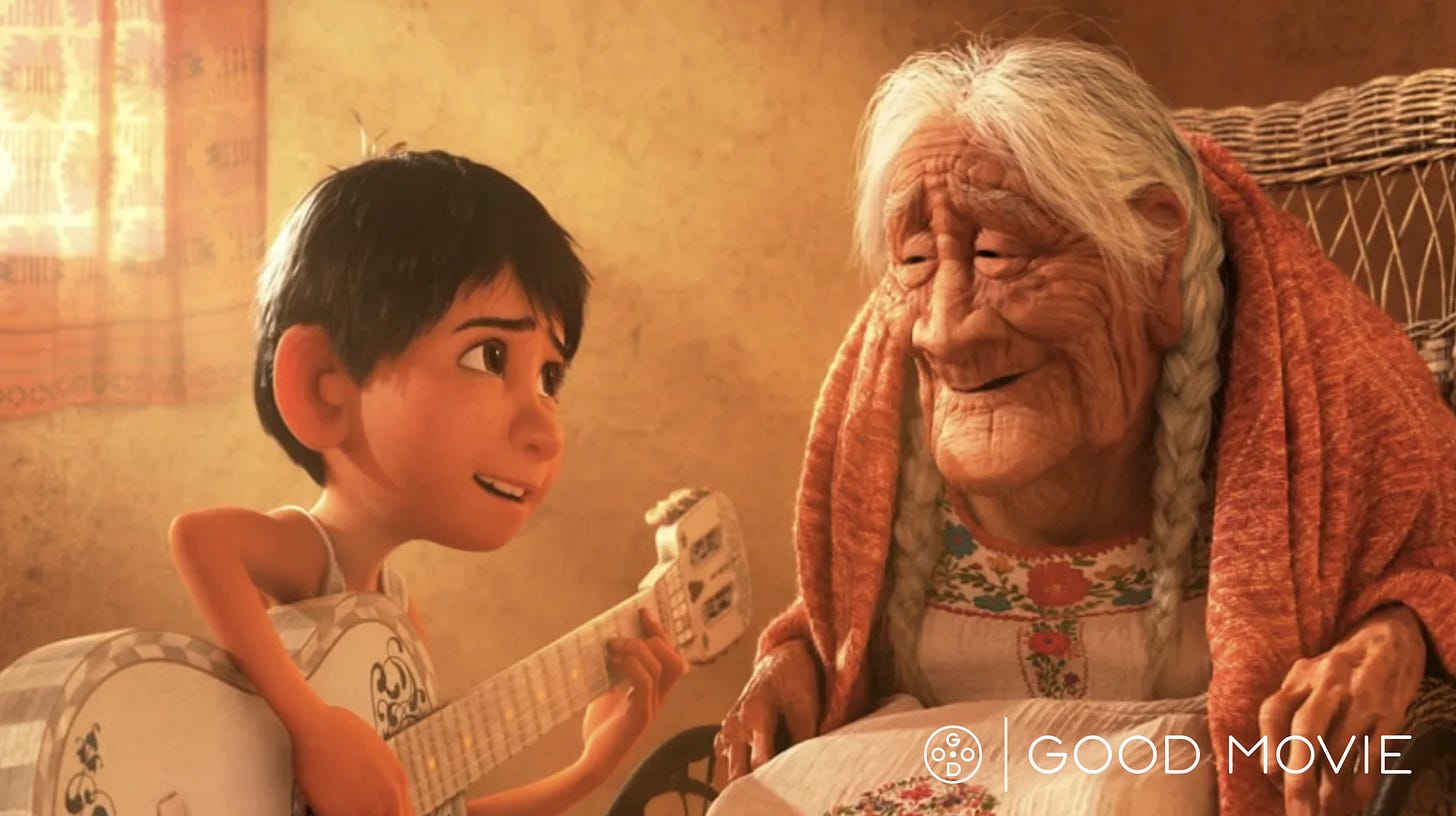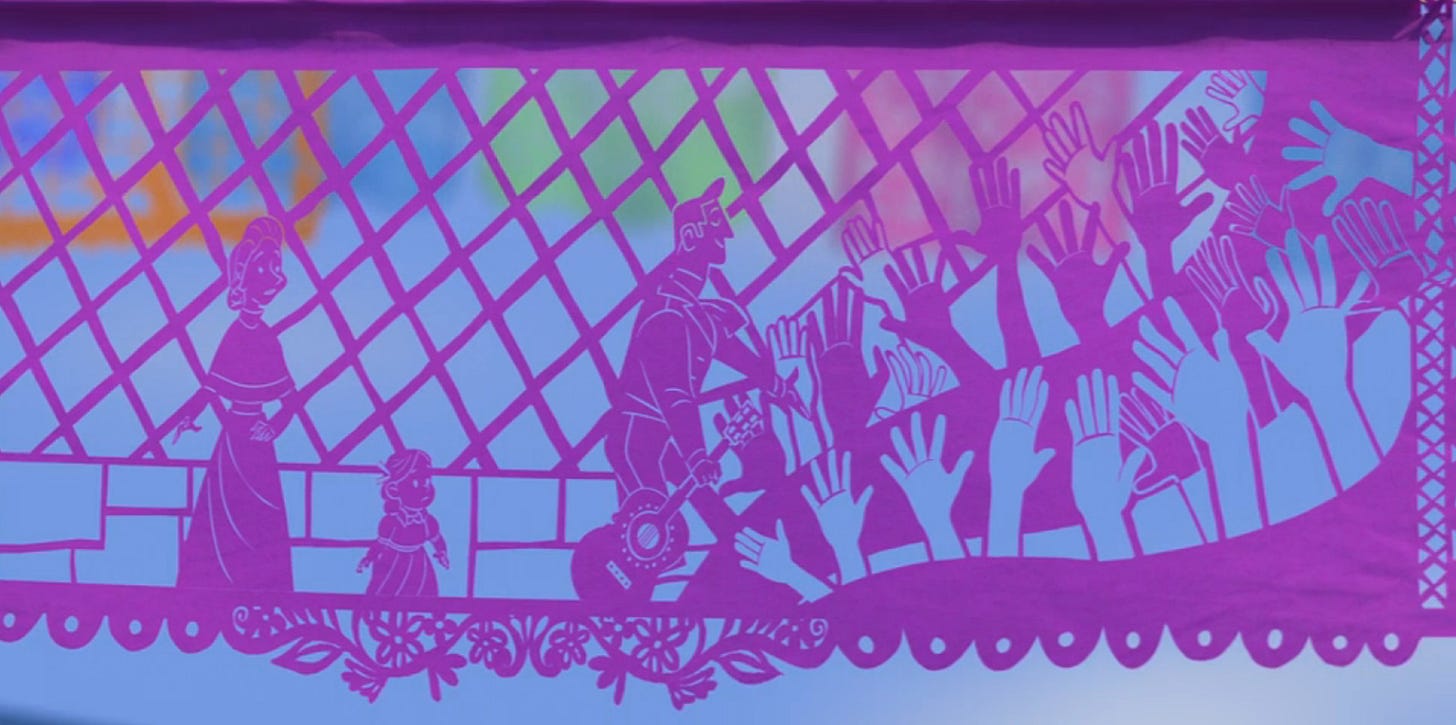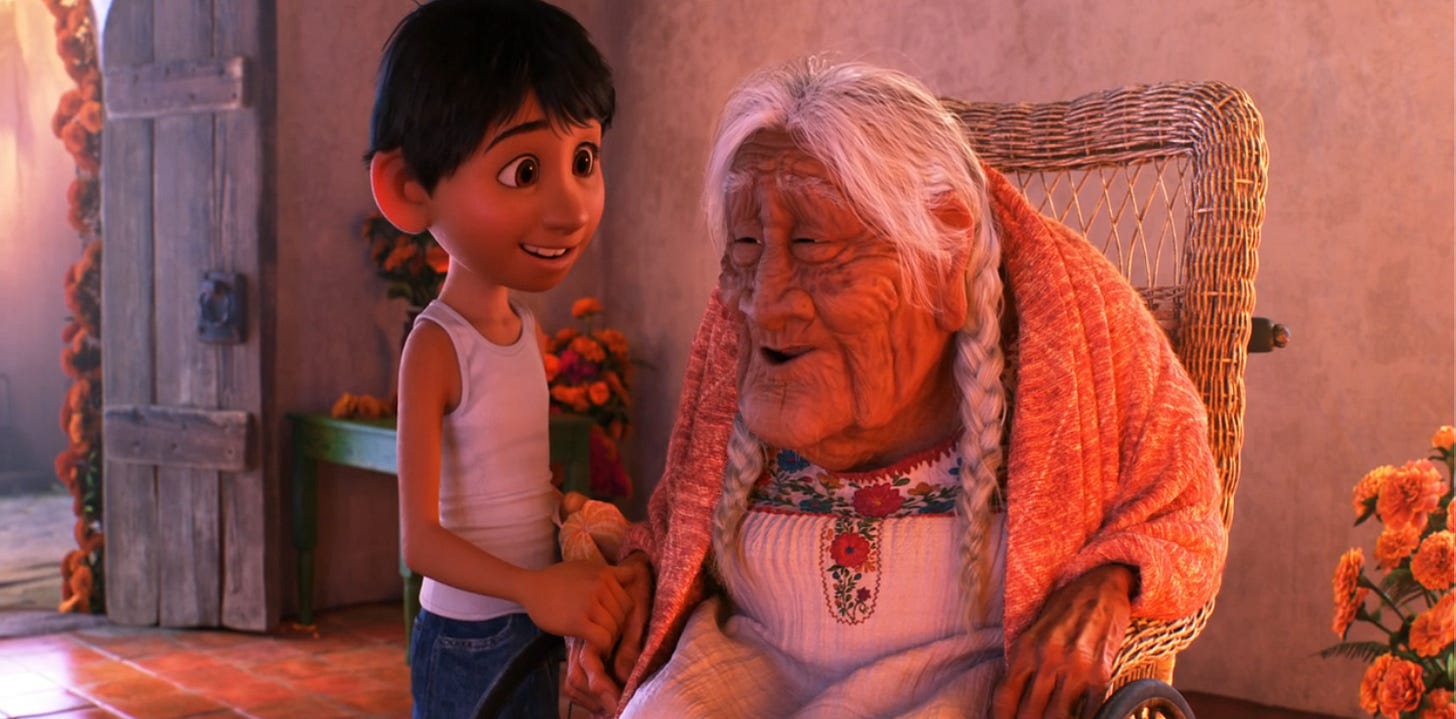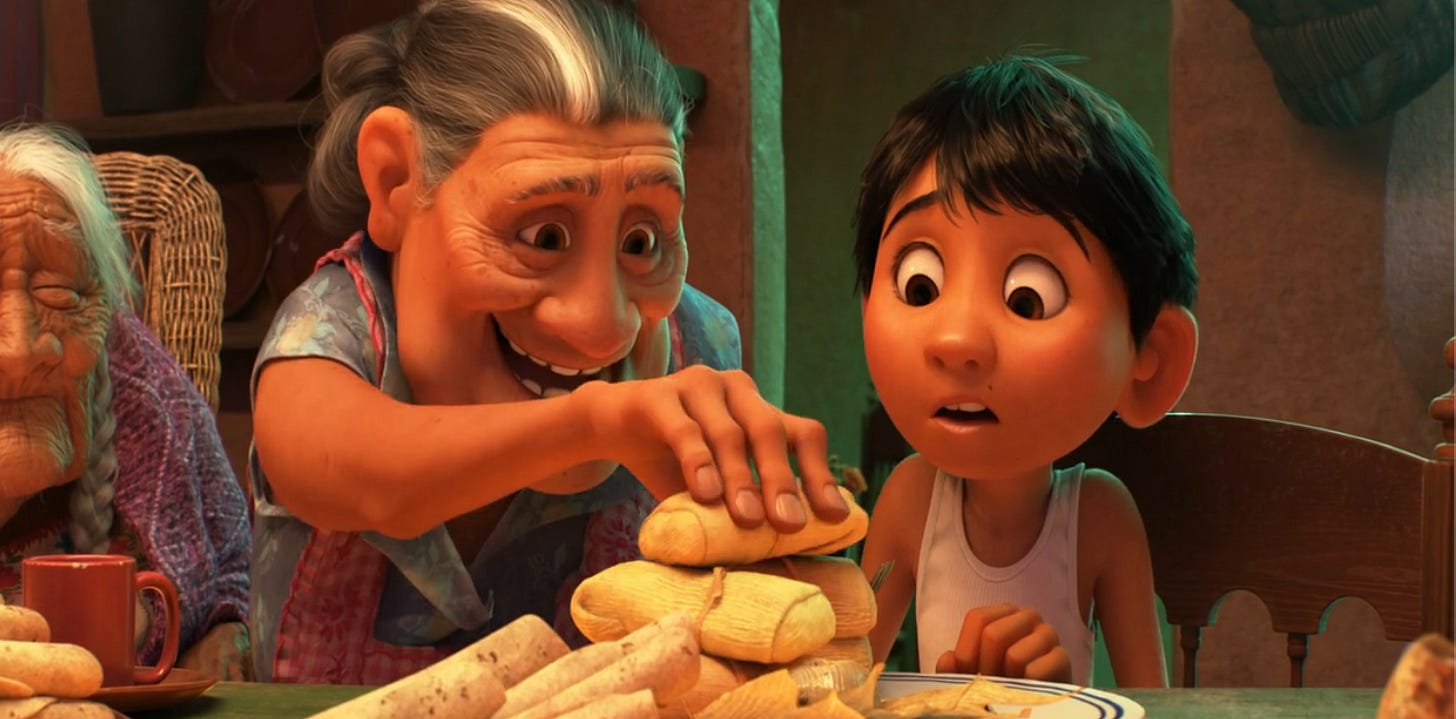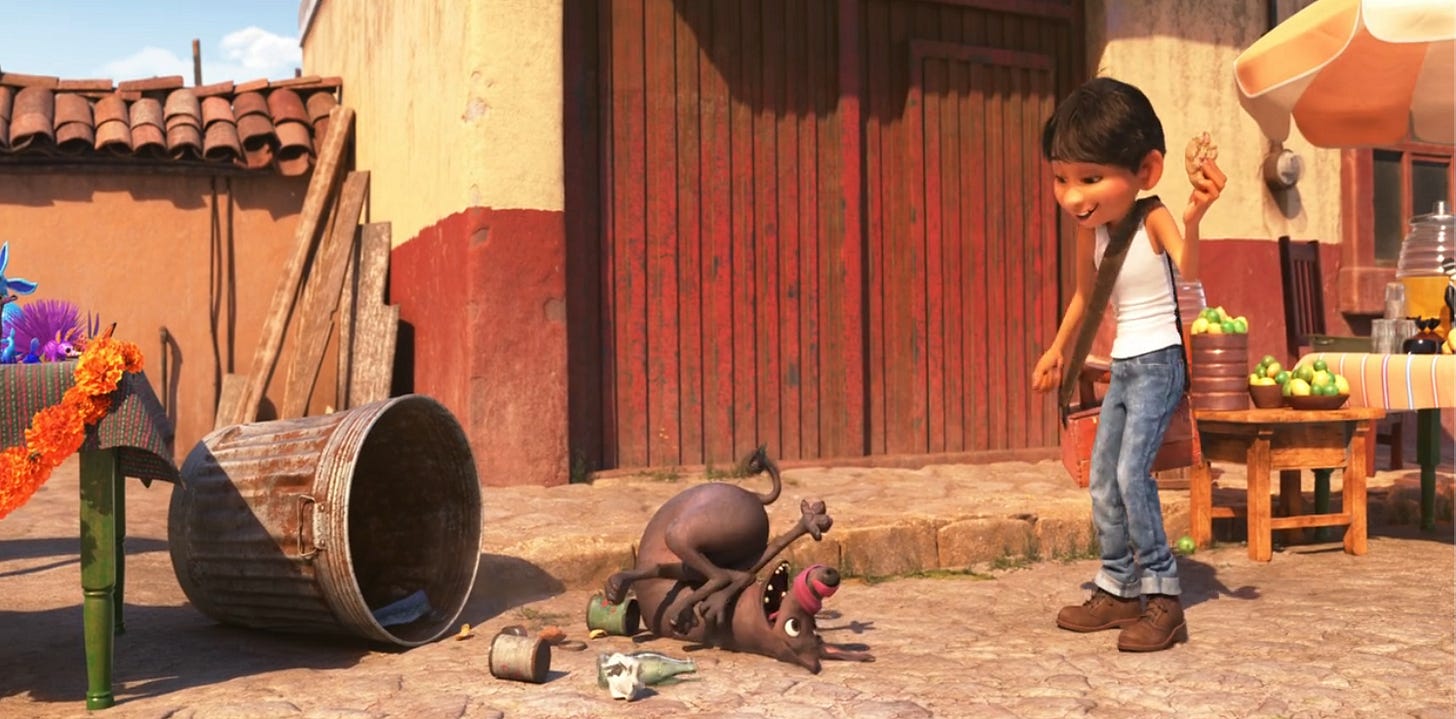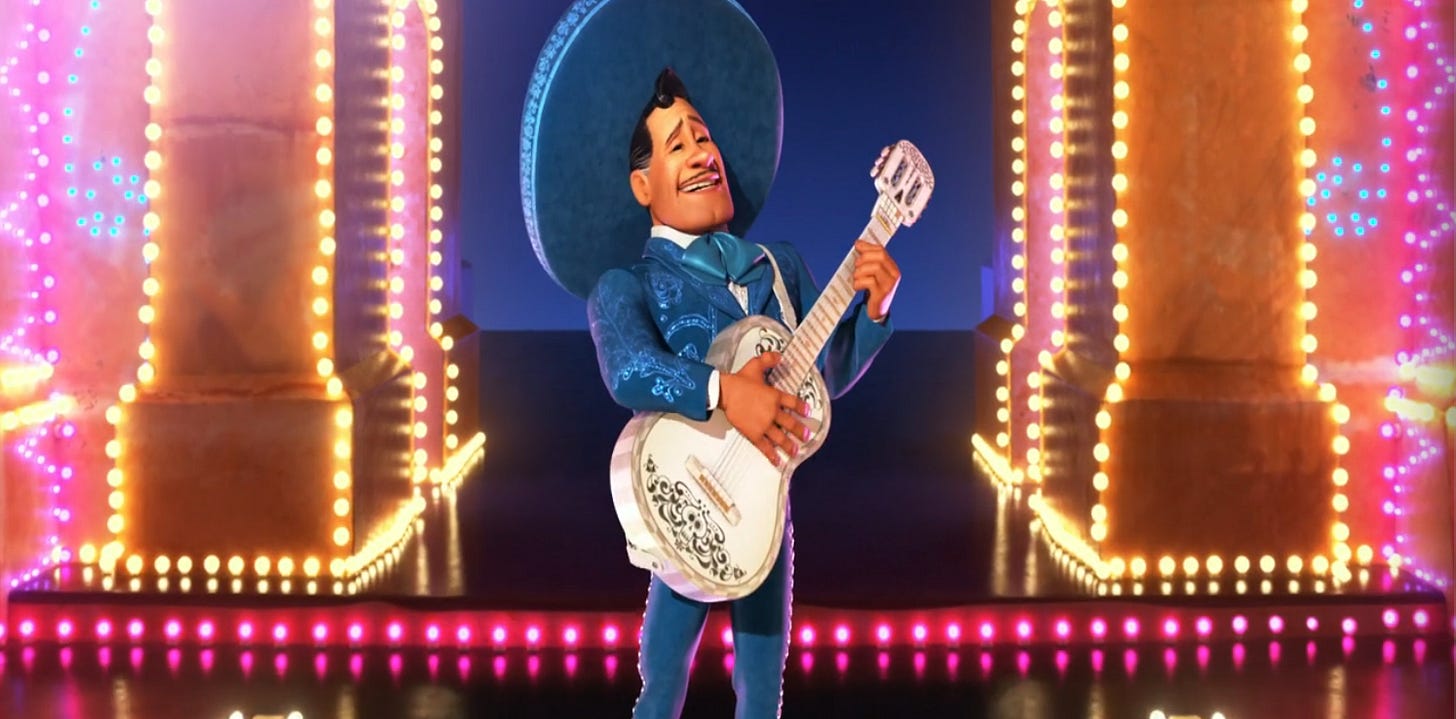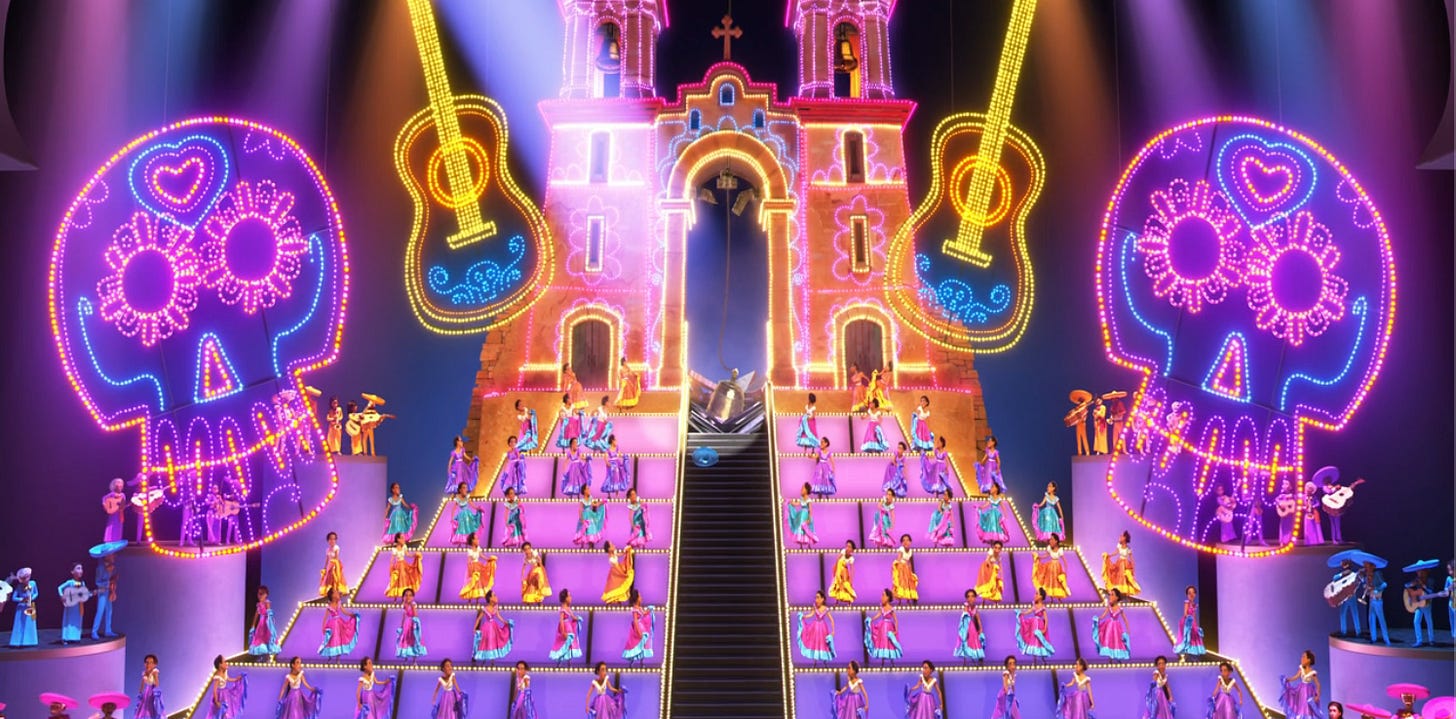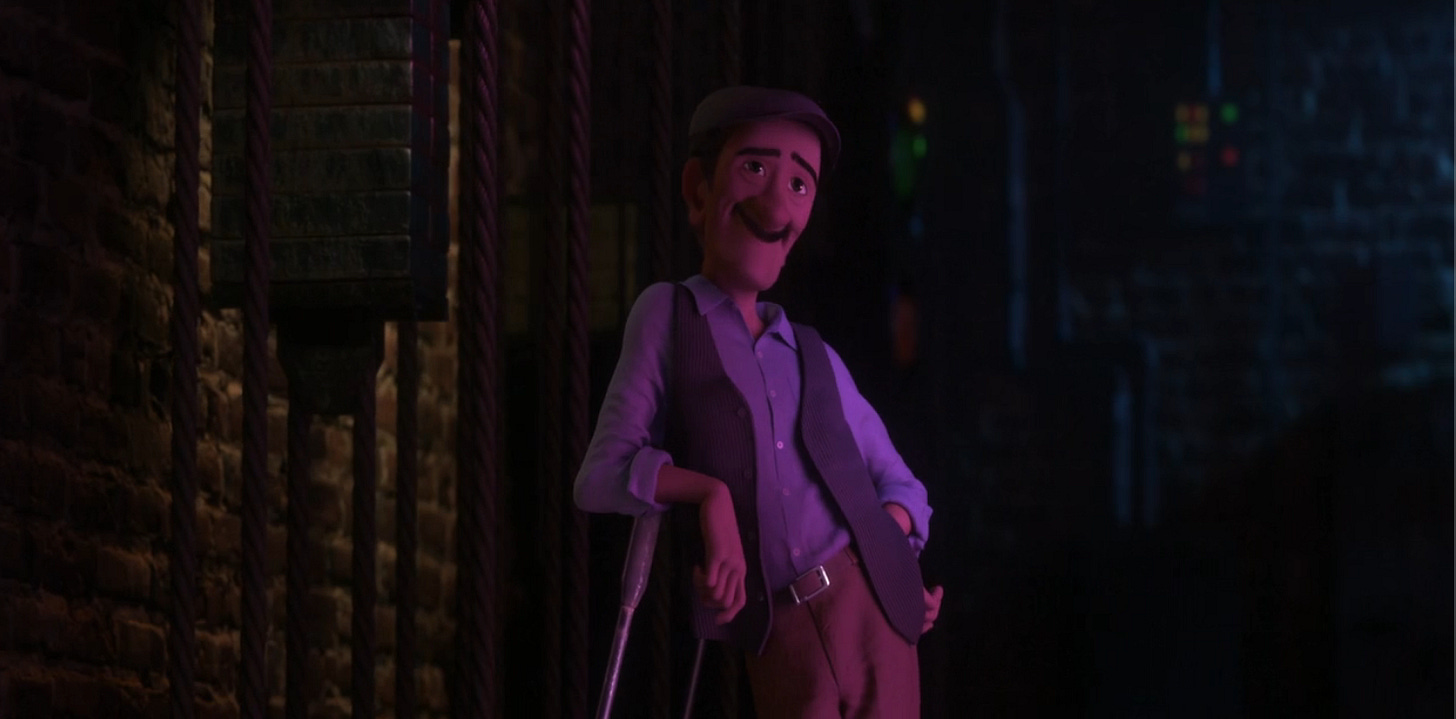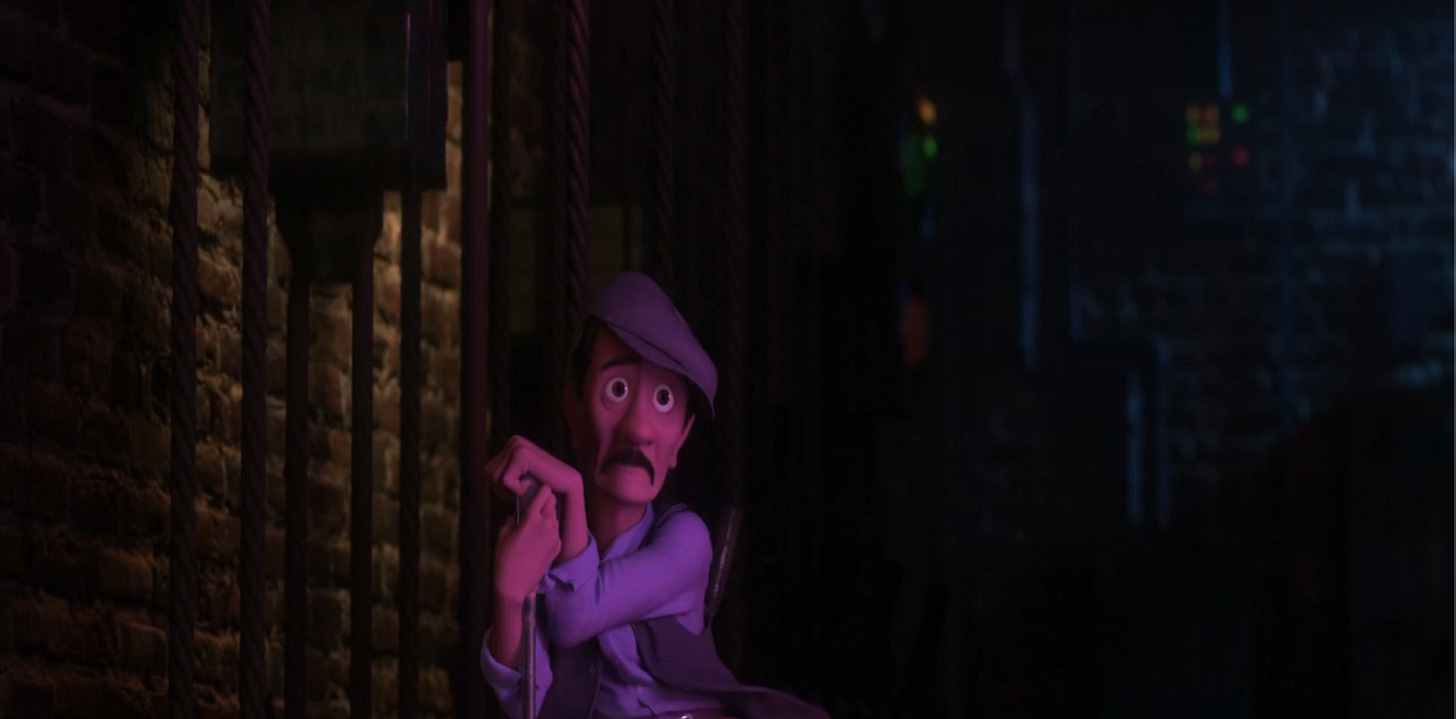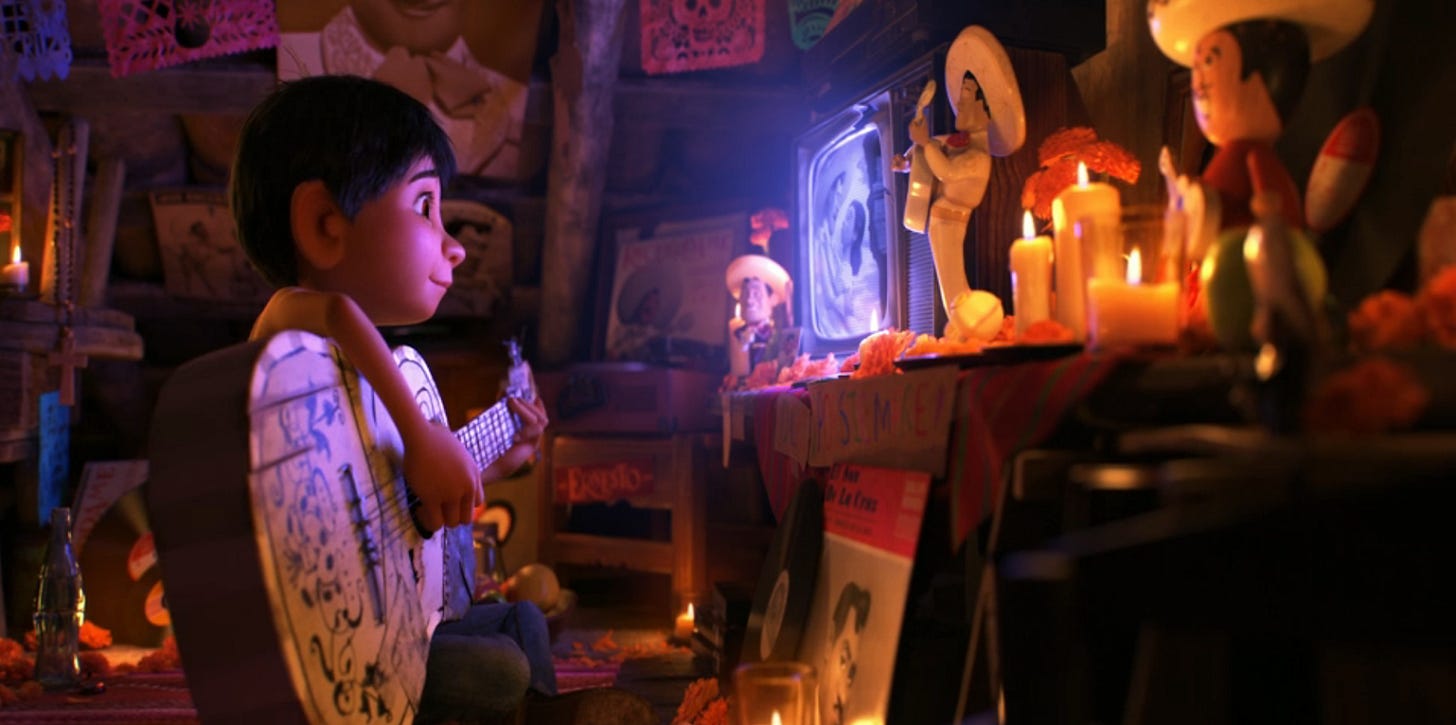Directed By: Lee Unkrich and Anthony Molina
Other Notable Films From Unkrich: Monsters, Inc., Finding Nemo, Toy Story 3
Starring: Anthony Gonzalez, Gael García Bernal, Benjamin Bratt, Alanna Ubach
Screenplay By: Adrian Molina and Matthew Aldrich
Movie Synopsis: A 12-year-old boy chases his dream of becoming a musician all the way to the Land of the Dead.
Signature Line: “Remember me.”
THE INTRODUCTION
An accounting of time, and people, and context
A thing that often happens when you talk with someone about Coco is the person you’re speaking with, at some point, will mention someone they knew who died. And that makes sense given that Coco is about death. What’s interesting, though, is that the tone of the conversation is rarely ever sad.
There will be sad moments in it, of course, because losing someone you love is fundamentally a sad notion. But that’s never the predominant feeling. The predominant feeling, wonderfully, tends to be a curious version of relief.
In most movies (and in most instances of life, really), death inspires fear and unease. But that’s not the case with Coco. Because what Coco posits is that death is not to be viewed as the end of a person’s life, but rather as the beginning of their legacy. And when approached in that manner—when the thing to fear isn’t dying, but the prospect of being forgotten—it encourages a different kind of introspection. It nudges you, as Andy Weir noted in his wonderful review of Coco in 2017, to ask yourself questions like, “How will I be remembered? Have I made more mistakes than done good deeds? Have I made my family proud?”1
When my grandmother suddenly passed away just six months after being diagnosed with cancer in 2008, all my brain would allow me to feel was anger. A rotten, furious anger. It soaked its way into my bones, and into my neurons, and into my heart. It was awful. And it was like that for a number of years.
Eventually, though, time began to loosen that anger’s grip on me. And when it did, I felt a shift occur. I felt myself thinking less and less about what my family had lost when she’d been taken from us, and more and more about what we’d been given when she was there with us. Or, said differently:
I was no longer thinking about her death. I was thinking about her legacy.
And when that happened, the anger dissipated entirely. And it was replaced with love, and appreciation, and that curious version of relief.
And eventually, with a promise that I would never, ever, ever forget her.
THE VIEWING
A timestamped rewatch of Coco
1:07: See these things here? They’re called “papel picado.” It’s a handmade decoration where you fold up pieces of tissue paper and then cut fancy patterns into them. Kids at elementary schools here in San Antonio make them every year. I was under the impression for a long time that every elementary school did this, like going to the zoo on a field trip or whatever. But nope. I found out when I moved out of San Antonio and to a less Mexican-dense city that that is not the case at all.
2:23: You can get offended by pretty much anything if you try hard enough. Here, for example, the movie starts in voiceover with Miguel Rivera (Coco’s main character) telling a story of family history: Four generations ago, Miguel’s great-great-grandfather abandoned his wife and their toddler in pursuit of chasing down his dream of becoming a world famous musician. In response, Miguel’s great-great-grandmother (Mama Imelda) decided to ban music from her life, eventually teaching herself how to make shoes so as to provide for herself and her daughter.
And so if you wanted to, you could very easily be like [imagine me making my voice very petulant here], “Oh, wow, okay. Sure. When you finally get around to giving the Mexicans our own Pixar movie you set it up so that everything begins with an absentee dad and a single mom forced into manual labor. I see how it is. I see what you think of us.” You could say that. You could definitely say that. Or you could just watch the movie and not be a dork.
3:04: This is an ofrenda. It’s an altar of sorts. Mexicans make them as a way to honor the memory of loved ones who’ve passed away. (We’re barely a couple entries into this essay and I’m already feeling like… Okay, you remember how Steve Irwin would walk around in the wilderness pointing at stuff like, “Oye! Look! It’s a copperhead!” and then list off some facts about whatever he found? That’s what I feel like right now, except but with Mexican stuff. I don’t think I’m gonna do it anymore. Non-Mexicans, you’re on your own from here on out. Sorry.)
3:06: Actually, you know what? No. I changed my mind. I am gonna do it, but I’m only gonna give incorrect explanations. That’s more fun for me.
3:13: Oh, man. Miguel and Mama Coco are here.2 I’m already nervous about rewatching the end of this movie when they have their moment together. There have only been a handful of times in my life where I heard full-on sobbing from an audience in a theater. It happened when I watched What Dreams May Come in 1998, and when I watched Fruitvale Station in 2013, and when I watched Coco.
3:14: P.S. When my kids asked me why I was crying after we watched Coco, I just told them I was thinking about World War II. If you’re a dad, you can respond to basically any inquiry about any unexpected show of emotion by saying you were thinking about World War II.
3:53: Miguel’s abuelita is here. She’s Mama Coco’s daughter, and the matriarch of the Rivera family. “Abuelita,” by the way, is Spanish for “chainsaw.” It’s a term of endearment in Mexican culture
4:38: Dante’s here. He’s the best. He’s a very energetic, very enthusiastic, very dumb-dumb street dog who follows Miguel everywhere. I love dogs in movies so much. It doesn’t even have to be a good dog for me to love it. It just has to be a dog. Even the worst dogs, like Cujo, or that one from Man’s Best Friend who killed all them people, or the Rottweilers from The Omen—even those dogs, when they showed up in their movies, I was like, “You know, I sure would like to pet those dogs.”
6:11: Ernesto De La Cruz is here. We’re gonna talk a bunch later about how much this guy fucking sucks, but for right now, all you need to know is: He’s the most famous musician to have ever come out of Mexico. He was killed in his prime when a giant bell fell and crushed him during a performance.
And to that point, do you know who I want more information on? This guy:
He’s the one responsible for Ernesto De La Cruz’s death. (That lever he’s leaning on is the one that controlled the giant bell. He lost focus while watching De La Cruz perform, leaned up against it, and then that’s what caused the bell to fall on De La Cruz.)
I wonder how he took the tragedy. I mean, it was an accident, obviously, but he’s still the guy responsible for killing a person who, at the time, was a beloved figure, and the pride of the nation. The weight of that guilt had to have been unbearable. Like, imagine you were the reason that Beyoncé died. FUCKING BEYONCÉ IS DEAD BECAUSE OF YOU. Imagine how that would feel on your spirit. I don’t wanna get too dark here, but… I mean… this guy… he definitely… [imagine right here I make a gesture like I’m wrapping a rope around my neck a couple times and then pulling it upward]… right?
8:00: Let’s do a plot update real quick: Miguel loves music. He dreams of being a mariachi. But his family has a very strict NO MUSIC EVER policy because of his great-great-grandfather abandoning his wife and child in pursuit of his musical dreams. That’s why right now his grandma is threatening to beat up a mariachi with her chancla (because the mariachi handed Miguel his guitar for him to play).
8:01: P.S. Here’s a real-world example of how fiery the Mexicans are: There’s a minor league baseball team here in San Antonio called the Missions. Every so often, they change their name and logo for special games. And when they do so, their new name—and I swear to God this is true—their new name is “The Flying Chanclas.” It’s a not-so-subtle wink at the thing of how Mexican moms like to hit people with their shoes when they get mad. That’s how fiery the Mexicans are. A professional minor league baseball team periodically opts to honor us by changing their name and logo to a universal symbol of abuse. And guess what? We fucking love it. The Flying Chanclas have a 100 percent approval rating in town.
10:03: Miguel’s grandma is talking about the importance of the ofrenda, and how each family is supposed to leave offerings for deceased relatives on the night of Día De Los Muertos. This movie is really beautiful. Like, not just in message or tone, but also in imagery. There’s a six-minute long credits rollout at the end of Coco that lists the hundreds of people who worked on the film. All those names should be in size 95 font. Incredible work all the way around.
12:13: Miguel has an ofrenda of his own, except but his is dedicated to Ernesto De La Cruz. It seems like a sweet thing right now, but that’s only because we don't know who De La Cruz really is yet. By the end of the movie, having a De La Cruz shrine is akin to having a Hannibal Lecter shrine.
12:50: “The rest of the world may follow the rules, but I must follow my heart.” That’s a thing Ernesto De La Cruz said while talking to a woman. Incidentally, it’s also what I said to Larami a couple of years ago when we were at the movies and she asked me why I was dipping a Butterfinger in nacho cheese.
12:51: P.S. I know that dipping a Butterfinger in nacho cheese sounds like a gross thing to do, and that’s because it is. I do not recommend it.
Keep reading with a 7-day free trial
Subscribe to GOOD MOVIE to keep reading this post and get 7 days of free access to the full post archives.



